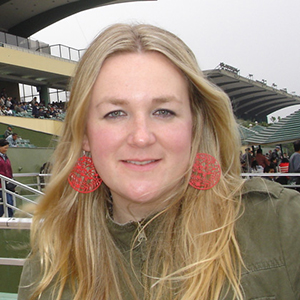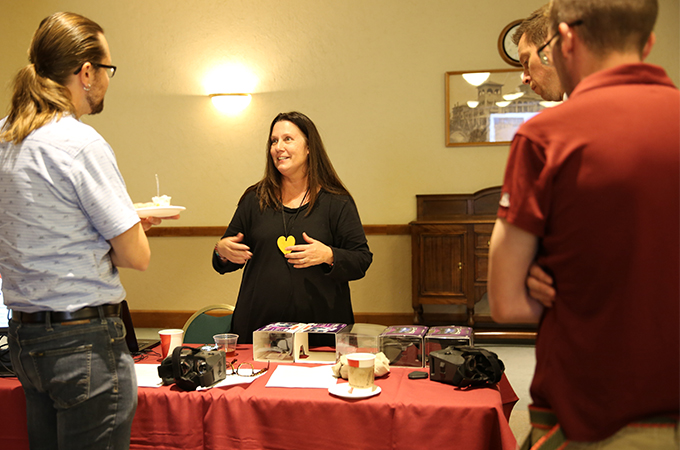Each year, Academic Computing and Instructional Technology Services makes a campus-wide call for faculty technology grant proposals. Initiated by President Ralph Kuncl six years ago and funded by the Provost’s Office, the grant program has promoted innovation in learning and teaching.
This year, 11 faculty members were awarded grants to fund five interdisciplinary projects. Ranging in focus from computer science to geographic information systems (GIS), each project aims to integrate technology into the classroom.
Environmental Studies Professors Hillary Jenkins and Shellie Zias-Roe were awarded a grant to provide students with an immersive classroom experience through virtual reality. Jenkins teaches field and laboratory courses across the spectrum of the earth sciences, from natural disasters to geology. Zias-Roe teaches environmental and sustainability planning. The project addressed common obstacles to field-based projects—time and money.
“My courses generally do not have a field component due to the time constraints of an 80-minute lecture,” says Zias-Roe. “[Virtual reality] does not replace a real-world field experience; it expands the classroom experience to include a field experience that otherwise would not have occurred.”

Throughout the semester, the pair introduced 360-degree videos related to course topics. Students in Zias-Roe’s Resilient Cities and Environmental Impact Assessment courses examined the intersection of human influence, changes to the environment, and impacts of community development with the help of virtual reality headsets. Jenkins used virtual reality to adapt field-based courses to include pre-laboratories, allowing students to investigate environmental factors without physically leaving the classroom.
While the professors were able to accomplish everything they set out to do, the project didn’t come without challenges. It was easy to underestimate the difficulty of capturing footage. Some locations were remote, and others, filmed using drones in collaboration with the Center for Spatial Studies, required a qualified drone pilot.
“Using 3D visualization technology comes with significant challenges—filming on location, translating that film into a 3D format, learning the software, creating an exercise to facilitate student learning, but it is pedagogically innovative, and that makes it exciting,” says Jenkins.
The effort seems to have paid off, though. Both professors have received highly positive feedback from students.
Following the success of the project, both professors plan to continue using virtual reality in their courses. “I can see future applications that can supplement existing field-based learning even further,” says Jenkins. “For example, we can visit a geologic outcrop in the field and then return to the classroom to sketch the lithologic contacts and structural features using a 3D visualization platform.”
Zias-Roe sees a wealth of opportunity to capture video—of various landscapes, best practices in development, positive and negative environmental impacts, and more—to teach students about land use and the built environment. The headsets also provide students with the opportunity to investigate things they saw in the field more deeply.
“Any time we can connect classroom content to an applied example of the material,” says Zias-Roe, “it fosters a student's opportunity to take ownership of their learning, make meaning of the learning, and perhaps make personal decisions regarding the direction and depth they may want to pursue their newfound knowledge.”
In addition to Jenkins and Zias-Roe, the four other groups that received funding over the past year are:
- Alana Belcon, Conroy Reynolds, John Glover, and Steve Moore, who contributed to the ongoing effort to reconstruct the history of Antigua by transferring information to an accessible and appealing format to scholars, researchers, teachers, and the general public.
- Kimiya Maghzi and Mikela Bjork, who incorporated Google Earth Street View and 360 degree imagery into special education courses to help students consider accessibility issues.
- Pani Chakrapani, who augmented the classroom experience by creating videos that provide students with in-depth explanations of computer science programming languages.
- Tommi Cahill and Allison Fraiberg, whose students used a 360 degree cameras to capture an immersive study abroad experience.
Learn more about U of R’s faculty technology grants and programs of study.






